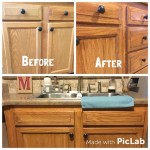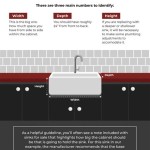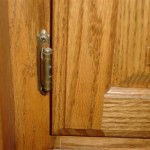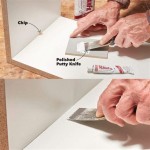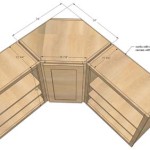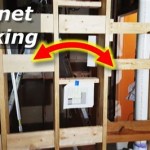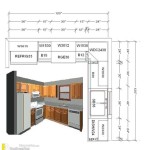Kitchen Cabinet Refacing in Michigan: A Comprehensive Guide
Kitchen cabinet refacing is a popular home improvement project for Michigan homeowners seeking to update their kitchens without the extensive expense and disruption of a full cabinet replacement. This process involves replacing the existing cabinet doors and drawer fronts with new ones, and applying a new veneer or laminate to the exterior surfaces of the existing cabinet boxes. This offers a fresh look while retaining the functionality and layout of the existing kitchen structure.
The Michigan climate, with its seasonal humidity changes, can impact cabinet materials and finishes. Understanding these factors is crucial for selecting durable and aesthetically pleasing refacing options. This article explores the key aspects of kitchen cabinet refacing in Michigan, covering material choices, cost considerations, the refacing process itself, and factors to consider when selecting a contractor.
Material Options for Kitchen Cabinet Refacing
The selection of materials for refacing plays a significant role in the overall look, durability, and cost of the project. Several options are available, each with its own advantages and disadvantages. Understanding these material properties is essential for making informed decisions that align with budget and aesthetic preferences.
Wood Veneer: Wood veneer involves applying a thin layer of real wood to the cabinet boxes. This provides the appearance of solid wood at a lower cost. Veneer is often available in various wood species such as oak, maple, cherry, and birch, each offering distinct grain patterns and color tones. Wood veneer is susceptible to moisture damage, making it important to choose a durable finish and properly seal the edges. In Michigan's climate, seasonal humidity fluctuations can cause wood to expand and contract, potentially leading to veneer cracking or peeling if not properly installed and maintained. Proper acclimation of the veneer to the kitchen environment prior to installation is crucial.
Laminate: Laminate is a synthetic material made of layers of paper and resin pressed together. It is known for its durability, affordability, and ease of cleaning. Laminate is available in a wide range of colors, patterns, and textures, including options that mimic the look of wood grain. While laminate is more resistant to moisture than wood veneer, it can still be damaged by prolonged exposure to water. The edges of laminate panels are often finished with edge banding, which can be prone to chipping or peeling over time if not applied correctly. In Michigan, consider laminates with enhanced moisture resistance to mitigate the effects of humidity.
Rigid Thermofoil (RTF): RTF is a type of vinyl that is applied to cabinet doors and drawer fronts using heat and pressure. It is a seamless material, which means there are no visible seams or joints. RTF is relatively durable and easy to clean, offering a consistent color and finish. However, RTF can be susceptible to heat damage and may peel or bubble if exposed to high temperatures. When selecting RTF, it is important to choose a high-quality product from a reputable manufacturer to ensure longevity and resistance to wear and tear. Consider the proximity of the cabinets to heat-generating appliances like ovens and stoves before choosing this option.
Solid Wood: While typically used for new cabinet doors and drawer fronts rather than the refacing of cabinet boxes, solid wood is the premium option. Solid wood offers unmatched durability and aesthetic appeal. It can be painted or stained to match any décor. Solid wood is susceptible to expansion and contraction due to humidity changes, so it requires careful construction and finishing. In Michigan, proper sealing and finishing are essential to protect solid wood cabinets from moisture damage. Choosing kiln-dried wood that has been properly acclimated to the local climate can also minimize the risk of warping or cracking.
Cost Considerations for Kitchen Cabinet Refacing in Michigan
The cost of kitchen cabinet refacing can vary substantially, depending on the size of the kitchen, the materials chosen, and the complexity of the project. Refacing is generally less expensive than replacing cabinets, but it still represents a significant investment. Understanding the factors that influence cost allows homeowners to budget effectively and make informed decisions.
Size of the Kitchen: The number of cabinets and drawers in the kitchen directly impacts the cost of refacing. A larger kitchen with more cabinets will naturally require more materials and labor, increasing the overall price. Measuring the total square footage of the cabinet surfaces to be refaced can help estimate the amount of materials required.
Material Choice: The type of material chosen for refacing has a significant impact on cost. Laminate and RTF are generally the most affordable options, while wood veneer and solid wood are more expensive. The quality of the material also plays a role; higher-grade laminates and veneers may cost more but offer improved durability and appearance. When considering the cost of materials, it is important to factor in the cost of associated items such as edge banding, adhesives, and hardware.
Door and Drawer Front Styles: The complexity of the door and drawer front styles can also affect cost. Simple, flat-panel designs are typically less expensive than more ornate or detailed styles. Custom door and drawer front designs will generally add to the cost due to increased fabrication time and material waste. Consider the labor involved in installing intricate designs, as this will factor into the overall cost.
Labor Costs: Labor costs can vary depending on the contractor's experience, expertise, and location. It is advisable to obtain multiple quotes from different contractors to compare prices and services. Be sure to inquire about the contractor's hourly rate, the number of workers involved in the project, and the estimated time required to complete the refacing. Ensure the quote includes all aspects of the project, such as demolition of old doors and drawer fronts, surface preparation, material installation, and cleanup.
Additional Costs: In addition to the primary costs of materials and labor, there may be additional expenses to consider. These can include the cost of new hardware (knobs, pulls, hinges), the cost of repairing or replacing damaged cabinet boxes, and the cost of painting or staining the refaced cabinets. There may also be costs associated with disposing of old cabinet doors and drawer fronts. It's also prudent to factor in a contingency fund for unexpected issues that may arise during the refacing process, such as hidden damage or structural problems.
The Kitchen Cabinet Refacing Process
Understanding the refacing process can help homeowners prepare for the project and ensure a smooth and successful outcome. The process typically involves several key steps, from initial consultation to final inspection.
Initial Consultation and Measurement: The first step is to meet with a contractor to discuss the project goals, assess the condition of the existing cabinets, and take measurements. During this consultation, the contractor will discuss material options, door and drawer front styles, and hardware choices. The contractor will also inspect the cabinet boxes for any damage or structural issues that need to be addressed. Accurate measurements are crucial for ensuring that the new doors, drawer fronts, and veneer fit properly. A detailed estimate outlining the scope of work, materials, and costs should be provided.
Preparation: Before refacing can begin, the existing cabinet doors, drawer fronts, and hardware must be removed. The cabinet boxes are then thoroughly cleaned and sanded to create a smooth surface for adhesion. Any damaged areas, such as chips or cracks, should be repaired. The contractor may also need to reinforce weak or unstable cabinet boxes. Protecting the surrounding areas, such as countertops, flooring, and appliances, is essential to prevent damage during the refacing process. This may involve covering surfaces with drop cloths or plastic sheeting.
Veneering or Laminating: The chosen veneer or laminate is then applied to the exterior surfaces of the cabinet boxes. This process typically involves using a strong adhesive to bond the material to the cabinet boxes. The edges of the veneer or laminate are often finished with edge banding to create a seamless and professional look. The contractor will use specialized tools to ensure that the veneer or laminate is applied smoothly and evenly, without any bubbles or wrinkles. Precise cuts and trimming are necessary to achieve a perfect fit.
Installation of New Doors and Drawer Fronts: Once the cabinets have been veneered or laminated, the new doors and drawer fronts are installed. This involves attaching the doors and drawer fronts to the cabinet boxes using hinges and screws. The hardware (knobs, pulls) is then installed. Proper alignment and adjustment of the doors and drawer fronts are crucial for ensuring smooth and easy operation. The contractor may need to make adjustments to the hinges or drawer slides to achieve the desired fit and function.
Final Inspection and Cleanup: After the refacing is complete, the contractor will conduct a final inspection to ensure that all work has been performed to the homeowner's satisfaction. Any necessary touch-ups or adjustments will be made. The work area will be thoroughly cleaned, and all debris will be removed. The homeowner should carefully inspect the refaced cabinets to ensure that there are no defects or issues. Any concerns should be addressed with the contractor before the project is considered complete.
Choosing a Kitchen Cabinet Refacing Contractor in Michigan
Selecting a reliable and experienced contractor is crucial for a successful kitchen cabinet refacing project. A qualified contractor can provide expert advice, quality workmanship, and peace of mind. Consider the following factors when choosing a contractor in Michigan.
Licensing and Insurance: Verify that the contractor is properly licensed and insured. Licensing ensures that the contractor meets certain qualifications and standards. Insurance protects the homeowner from liability in case of accidents or damages during the project. Request copies of the contractor's license and insurance certificates and verify their validity with the appropriate authorities.
Experience and Expertise: Choose a contractor with extensive experience in kitchen cabinet refacing. A contractor who has completed numerous refacing projects is more likely to have the skills and knowledge necessary to handle any challenges that may arise. Inquire about the contractor's past projects and ask for references from previous clients. Reviewing the contractor's portfolio can provide insight into their workmanship and style.
Reputation and Reviews: Research the contractor's reputation by reading online reviews and testimonials. Check websites like the Better Business Bureau, Angie's List, and Yelp for customer feedback. A contractor with a positive reputation is more likely to provide satisfactory service. Be wary of contractors with numerous negative reviews or complaints. Contacting previous clients and asking about their experience with the contractor can provide valuable insights.
Estimates and Contracts: Obtain written estimates from multiple contractors and compare them carefully. The estimate should include a detailed breakdown of the costs for materials, labor, and other expenses. A contract should clearly outline the scope of work, the project timeline, payment schedule, and warranty information. Read the contract carefully before signing it to ensure that all terms and conditions are acceptable. Avoid contractors who provide vague or incomplete estimates or who are unwilling to provide a written contract.
Communication and Customer Service: Choose a contractor who communicates effectively and provides excellent customer service. The contractor should be responsive to inquiries, willing to answer questions, and able to address any concerns promptly. Good communication is essential for ensuring that the project runs smoothly and that the homeowner is satisfied with the results. A contractor who is attentive, respectful, and professional is more likely to provide a positive experience.

Cabinet Refacing Marblecast Of Michigan

Cabinet Refacing Services In Warren Mi

Cabinet Color Change N Hance Wood Refinishing Of Southeast Michigan

Cabinet Refinishing New Finish Llc In Saginaw Michigan

Cabinet Refinishing New Finish Llc In Saginaw Michigan

Cabinet Refacing Services In Warren Mi

Kitchen Cabinet Resurfacing Company Refacing More

Cabinet Refacing Marblecast Of Michigan

Kitchen Cabinet Refacing Grand Rapids Mi Hwc Homeworks Corp

Kitchen Cabinet Resurfacing Company Refacing More
Related Posts

